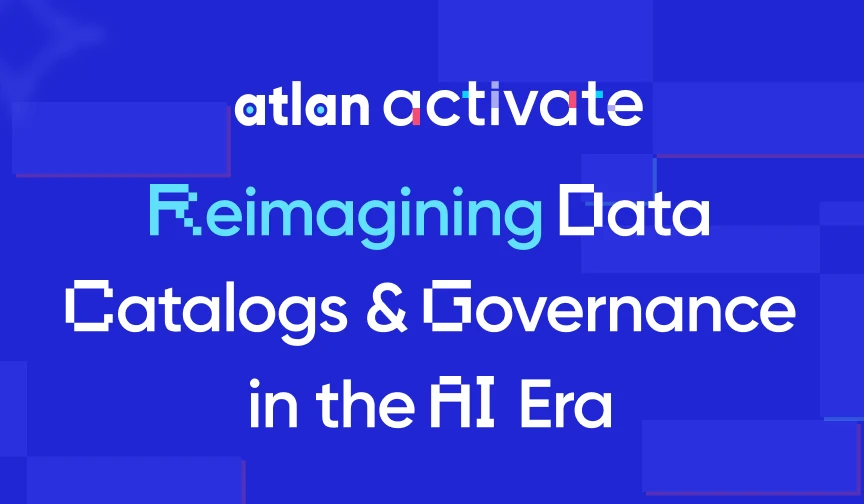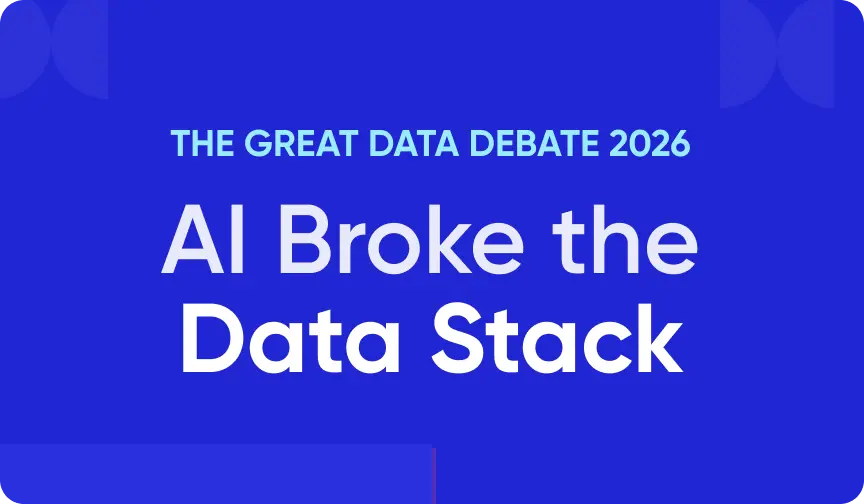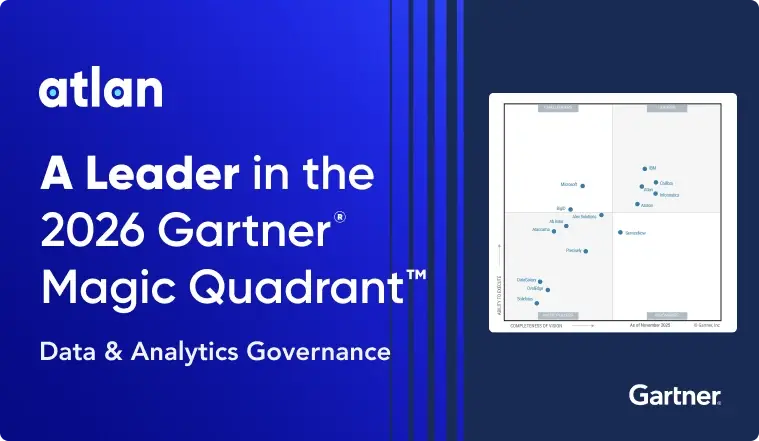Data Governance Checklist: Prerequisites and Critical Components
Share this article
Maintaining, analyzing, and using your data mandates robust guidelines, i.e., data governance. A handy data governance checklist can help create an impactful program. The checklist will contain essential components, such as roles, policies, metrics, KPIs, and more.
This article outlines the three prerequisites and eight components of an organization’s data governance checklist.
Table of Contents
Permalink to “Table of Contents”- Data governance checklist: 3 prerequisites to consider
- Crucial components to include
- Putting it all together
- Related reads
Data governance checklist: 3 prerequisites to consider
Permalink to “Data governance checklist: 3 prerequisites to consider”Before we delve into the data governance checklist components, let’s consider essential prerequisites as follows:
- Review the current state of data governance: Assess your data governance maturity level by reviewing existing data quality practices, policies, roles, and processes. Ensure clear documentation of these practices and use your findings as a benchmark.
- Understand data governance goals: Identify the desired business outcomes and align your data governance goals accordingly. Also, ensure that a framework is in place.
- Identify key stakeholders, roles, and responsibilities: Involve relevant stakeholders to make your data governance plan inclusive, diverse, and collaborative. Enlist leadership to champion your initiative.
Now, let’s look at the essential components of a comprehensive data governance checklist.
Data governance checklist: 8 crucial components to include
Permalink to “Data governance checklist: 8 crucial components to include”You can use the data governance checklist below to ensure you’re covering all your bases before implementing your data governance plan:
- Define data governance roles and responsibilities
- Establish data governance policies and standards
- Identify data governance metrics and KPIs
- Build a single source of truth for your data assets
- Outline access controls, user roles, personas
- Set up a business glossary
- Automate repetitive, manual processes
- Plan for regular reviews and improvements
Let’s delve into the specifics of each component.
1. Define data governance roles and responsibilities
Permalink to “1. Define data governance roles and responsibilities”The goal is to have the right teams in place and empower them to implement governance rules and policies and make data-driven decisions.
So, ensure you’ve brought together relevant people (key stakeholders and subject matter experts) from your organization’s numerous business and technical functions — DataOps, FinOps, legal, product, marketing, sales, etc.
Set up a data governance council or team consisting of data admins, stewards, product owners, custodians, and users.
A Data Governance Council (DGC) establishes and enforces data management and governance policies. It consists of key stakeholders and experts from various departments, including IT, legal, business operations, and compliance.
Dive deeper → Data governance roles: Who does what?
This is also the stage to check if you’ve set up communication channels, defined accountability, and established a regular collaboration and reporting cadence.
2. Establish data governance policies and standards
Permalink to “2. Establish data governance policies and standards”Identify and document data governance policies, procedures, standards, and guidelines to manage data assets throughout their lifecycles, from collection and storage to access and use. This is also the stage to learn about your critical data elements and ways to classify them.
Read more → Data governance policy with examples and templates
Also ensure that your organization maintains high data quality standards by setting up data quality controls — data validation, cleansing, enrichment processes, etc.
Moreover, you should understand regulatory compliance requirements and set up guardrails to ensure compliance monitoring and reporting. Compliance cannot be an afterthought; it should be inherent to your organization’s data culture and practices.
This is critical as, according to Gartner, 52% of IT executives consider compliance audits as the most common data governance issue they encounter.
Read more → How data governance and compliance is an act of checks and balances
3. Identify data governance metrics and KPIs
Permalink to “3. Identify data governance metrics and KPIs”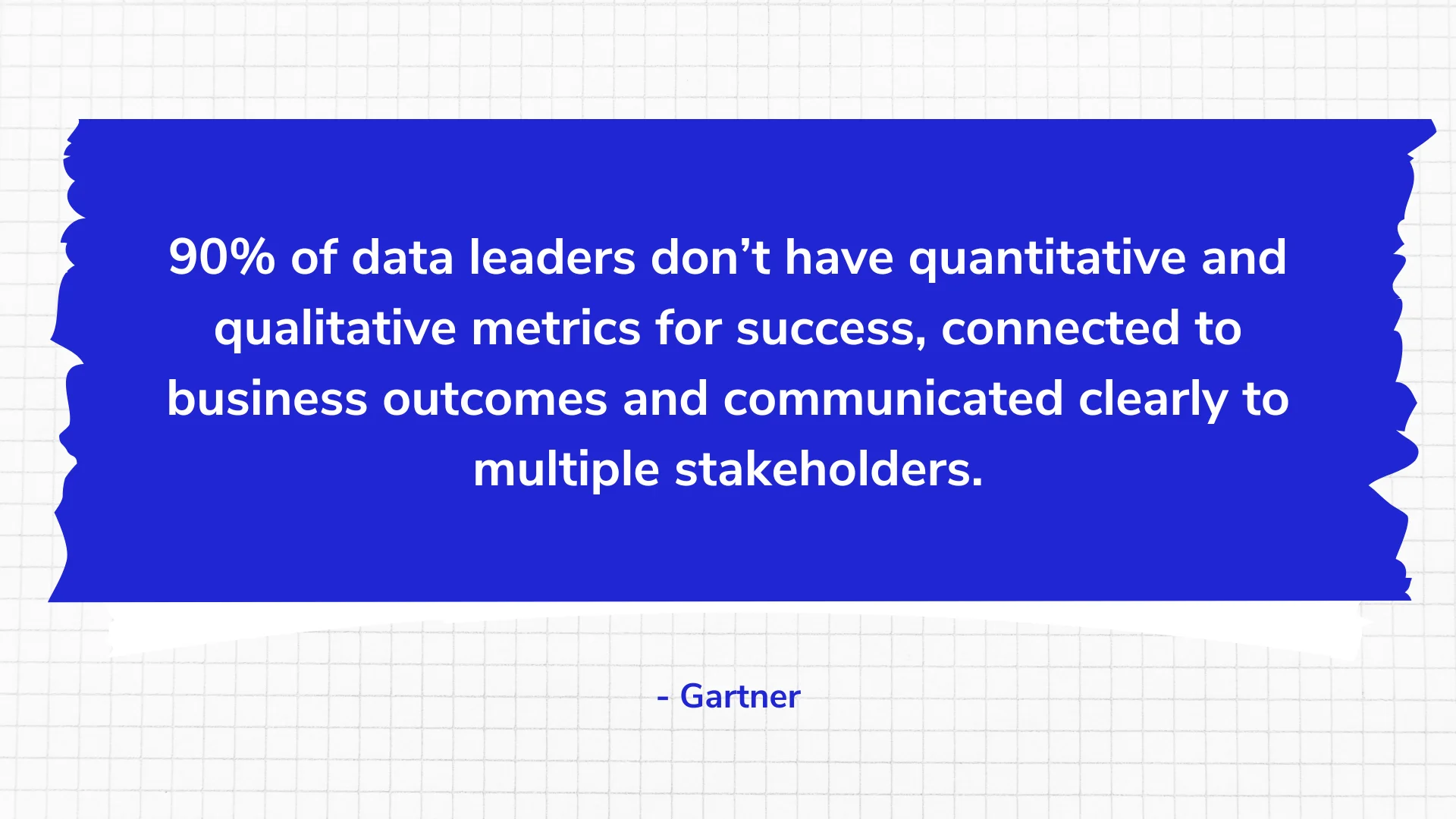
Select KPIs relevant to your data governance goals, such as data quality metrics, usage statistics, compliance audit results, and data breach incidents.
These KPIs must be quantifiable, trackable, and aligned with your business outcomes. The metrics used to measure these KPIs can be as follows:
- Data quality metrics, such as data accuracy rate, data completeness rate, and data timeliness
- Compliance metrics, such as the percentage of data assets complying with data privacy laws and the number of data security incidents
- Data governance adoption metrics, such as the percentage of data assets covered by the data governance framework
- Business ROI in terms of cost savings, time-to-value, productivity, regulatory compliance, risk mitigation, and better decisions
Dive deeper → KPIs for every data team in 2024
Use these KPIs to assess your organization’s current data governance performance. Mark this as a baseline to determine the impact of your initiative.
Next, ensure that you’ve outlined workflows to track the performance of your KPIs regularly and compare them against your baseline. This will help monitor progress and calculate ROI.
4. Build a single source of truth
Permalink to “4. Build a single source of truth”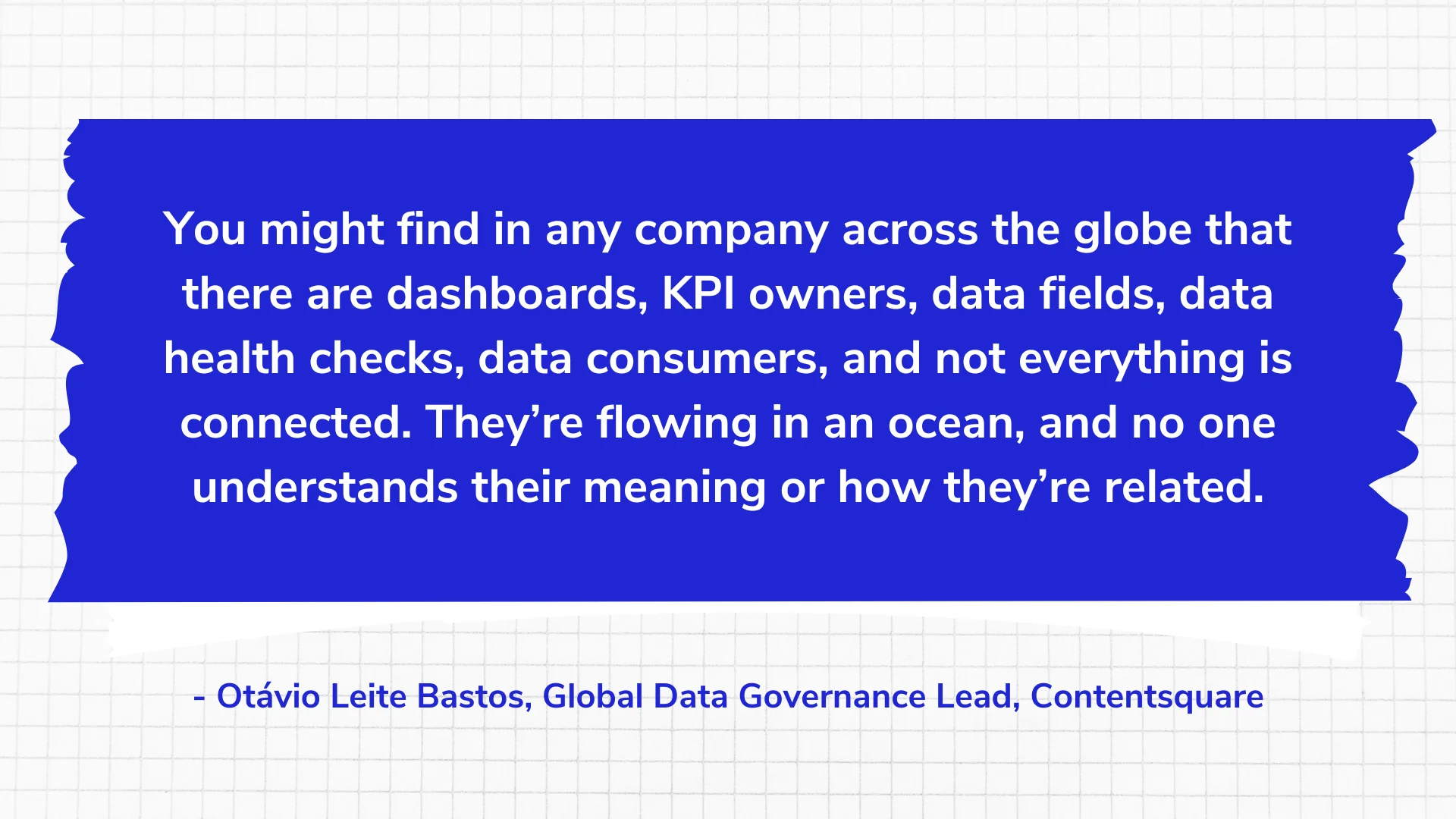
Use a modern data catalog to build a single source of truth for your data assets.
The catalog makes your data assets searchable and discoverable, showing you what data you have and how to manage and use it. This helps you document, enforce, and monitor data governance policies.
The data catalog should connect all the tools in your data stack (using native connectors or open APIs) — data warehouses, data lakes, lakehouses, databases, ETL/ELT tools, BI tools, etc.
It should also enable a bidirectional flow of metadata, sending enriched metadata and unified context back into every tool in the data stack. As such, you can continuously analyze data, plus everything that happens to it or is done to it.
Other data cataloging capabilities can include natural language search, end-to-end lineage and impact analysis, embedded collaboration, automation, and more.
Also, read → Essential data catalog capabilities
5. Outline access controls, user roles, personas
Permalink to “5. Outline access controls, user roles, personas”Data security, privacy, and integrity are central to the success of data governance. Access controls either grant or limit access to specific assets based on persona or purpose. For example, they may only permit certain users access to sensitive data and personally identifiable information (PII).
You can define access controls according to user roles or personas. For instance, user roles can be:
- Admin: Sets up integrations and data connections and manages users, groups, tags, and access policies, among other tasks
- Member: Can discover, maintain, and query assets
- Guest: Can only discover assets
Meanwhile, personas define policies to control which users can (or cannot) take certain actions on specific assets. They can be customized according to data team roles, such as data analysts, engineers, scientists, and business users.
You can also manage access using data domains and projects, further personalizing the data discovery experience.
The data catalog (from the previous checklist item) can assist in implementing domain-based, persona-based, or project-based access policies.
Also, read → Access personalization and curation using metadata
6. Set up a business glossary
Permalink to “6. Set up a business glossary”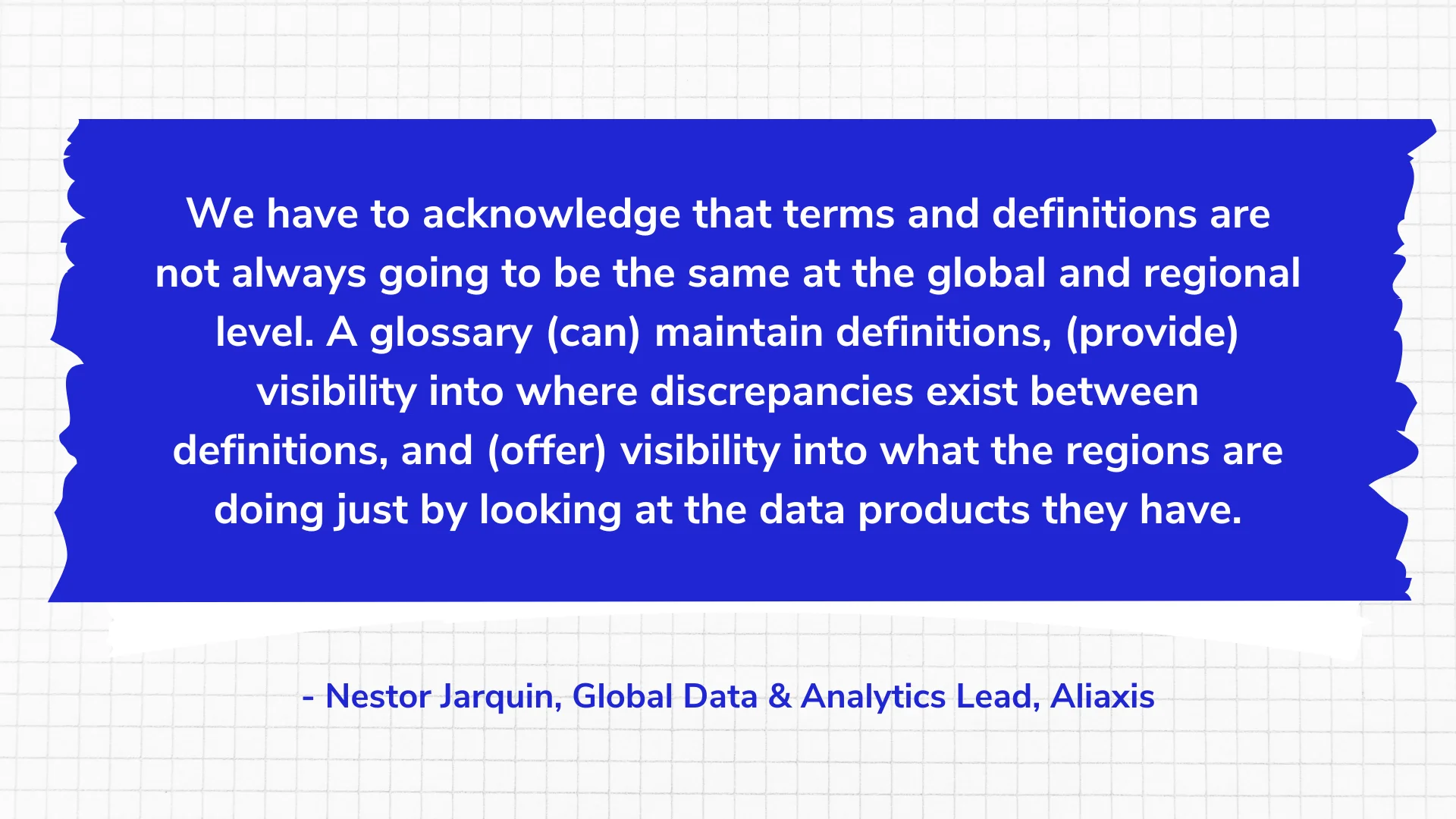
Documenting data asset names, definitions, ownership, descriptions, etc. would ensure consistency, document tribal knowledge, and provide adequate context to data consumers.
That’s where a business glossary can help. It would serve as an activated business network, creating connections between data, definitions, domains, metrics, and more.
The modern data catalog can solve this need by offering a business glossary that standardizes data asset types, definitions, metrics, and ownership while minimizing collaboration chaos.
Also, read → Business glossary value: How and why it matters
7. Automate repetitive, manual processes
Permalink to “7. Automate repetitive, manual processes”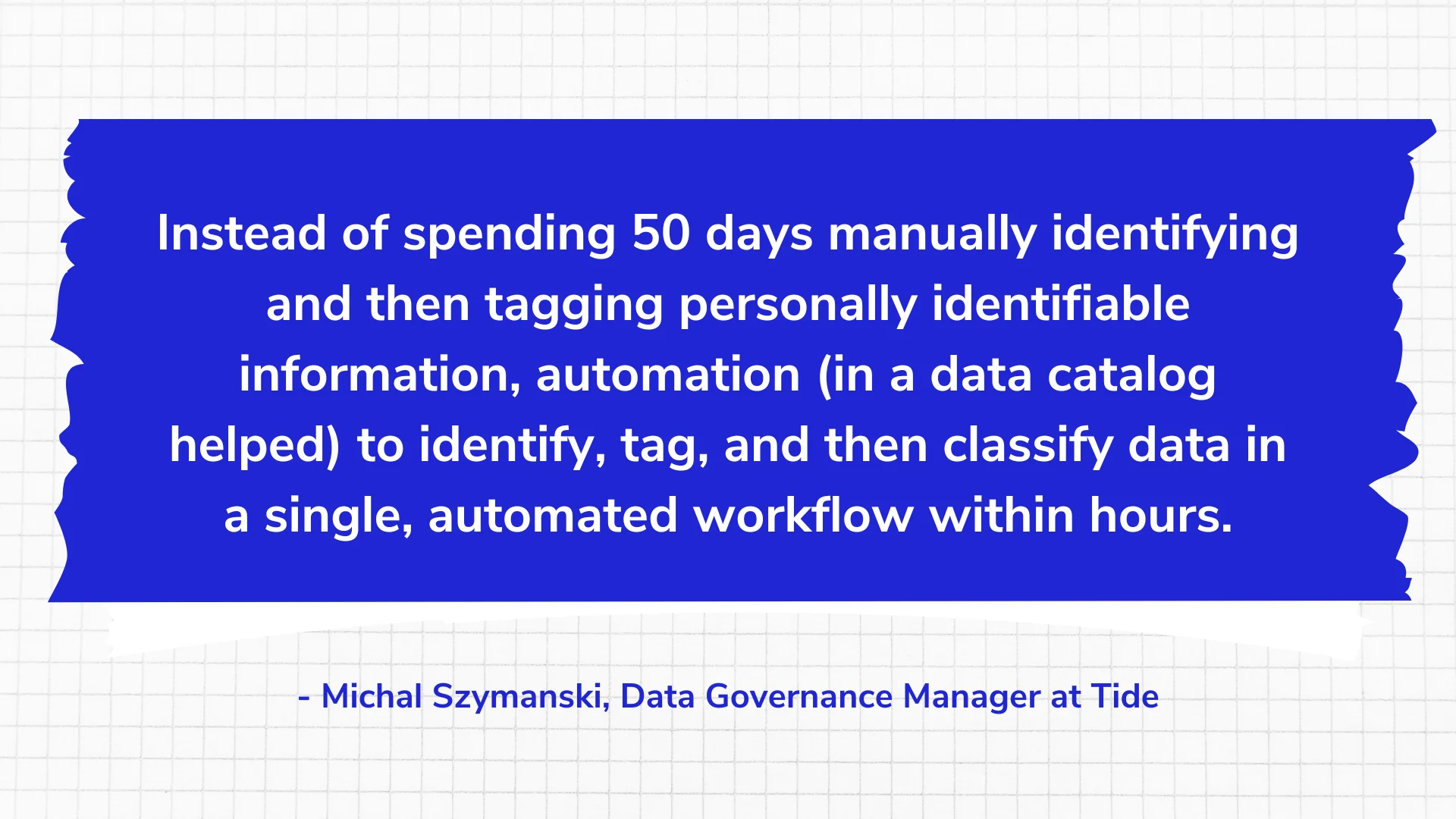
Automation can eliminate manual processes and reduce grunt work. So, identify processes or workflows that can be automated, such as:
- Metadata ingestion
- Classification and tagging
- Lineage mapping
- Propagation of access and sensitivity policies via lineage
- Data quality and security checks
- Reporting (compliance, data quality, governance metrics, etc.)
- Data asset documentation
How AI and automation are revolutionizing data governance - Source: Atlan on Youtube.
You can leverage the data catalog to set up these automated workflows, such as accelerating metadata documentation, auto-identifying unused assets, propagating classifications across sensitive data assets, and auto-assigning asset owners.
Also, read → Automation in data governance
8. Plan for regular reviews and improvements
Permalink to “8. Plan for regular reviews and improvements”Regular check-ins go a long way to improving the success rate of your data governance initiative. Organizing frequent reviews also helps to foster a data governance culture across the organization.
So, conduct periodic assessments of data governance adoption, maturity, and culture. Regular audits of your data processes, tracking adoption and usage metrics, and offering ongoing training sessions can help.
Additionally, find ways of setting up and improving mechanisms to gather feedback and encourage engagement so that you can continuously improve your data governance program, refining policies, practices, and initiatives accordingly.
For instance, you can incorporate gamification to ensure better adoption, usage, and engagement from data practitioners.
Digital financial services company Zip gamified data governance by encouraging early engagement and conducting weekly competitions.
Zip used the data catalog to measure engagement, rewarding data consumers who used the catalog, directly or indirectly, through Slack and Tableau, to search for terms and definitions. They also conducted user surveys to find ways to improve.
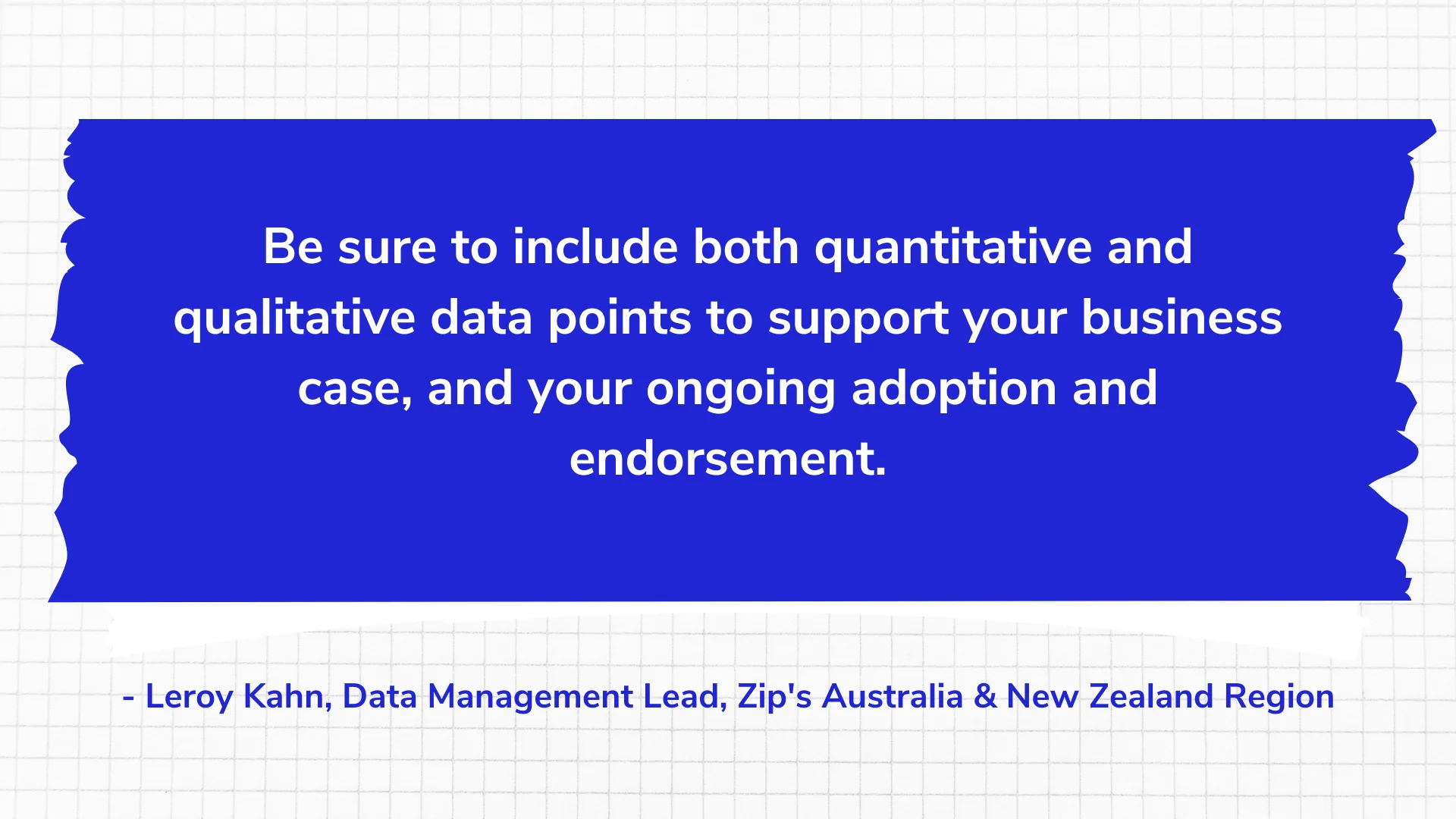
Dive deeper → How to improve data governance
Data governance checklist: Putting it all together
Permalink to “Data governance checklist: Putting it all together”According to Gartner, data governance is a major priority for 60% of data leaders. Following a structured data governance checklist and the prerequisites mentioned earlier can lay a strong foundation for effective data governance.
Here is a high-level snapshot of the data governance checklist that you can keep handy:
- Define data governance roles and responsibilities
- Set up the right team/group/body responsible for enforcing data governance
- Involve diverse stakeholders and subject matter experts
- Establish clear communication channels and accountability
- Encourage regular collaboration and reporting
- Establish data governance policies and standards
- Define and document data governance policies
- Understand data classification and tagging requirements
- Set up data validation, cleansing, and enrichment processes
- Establish guardrails for regulatory compliance monitoring and reporting
- Identify data governance metrics and KPIs
- Select KPIs aligned with your business outcomes
- Establish a baseline by tracking your performance
- Outline workflows to track progress and measure ROI continuously
- Build a single source of truth for your data assets
- Connect your entire data estate with a modern data catalog
- Ensure bidirectional flow of metadata
- Outline access controls, user roles, personas
- Understand how to govern access
- Set up user roles, personas, or access control in terms of data domains, projects, etc., using the data catalog
- Set up a business glossary
- Document data asset name, definition, description, ownership, relationship with other assets, and all tribal knowledge surrounding each asset
- Automate repetitive, manual processes
- Identify workflows that can be automated
- Leverage the data catalog to set up these workflows
- Plan for regular reviews and improvements
- Conduct periodic assessments of data governance adoption, maturity, culture
- Encourage engagement and collaboration using gamification, qualitative surveys, etc.
Data governance checklist: Related reads
Permalink to “Data governance checklist: Related reads”- Data Governance Readiness Assessment: A Step-by-Step Guide
- What is Data Governance? It’s Importance, Principles & How to Get Started?
- Federated Data Governance: Principles, Benefits, Setup
- Data Governance Framework — Examples, Templates, Standards, Best practices & How to Create One?
- Data Governance Policy: Examples, Templates & How to Write One
- 7 Best Practices for Data Governance to Follow in 2024
- Benefits of Data Governance: 4 Ways It Helps Build Great Data Teams
- Data Governance Roles and Responsibilities: A Quick Round-Up
- Automated Data Governance: How Does It Help You Manage Access, Security & More at Scale?
- Data Governance and Compliance: Act of Checks & Balances
- How to Drive Business Value With Data Governance?
- Data Catalog Connectors: Value, Types, Setup, and More
- A Guide to Gartner Data Governance Research — Market Guides, Hype Cycles, and Peer Reviews
- 5 Popular Data Governance Certification & Training in 2024
Share this article

